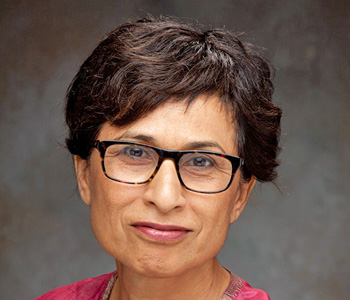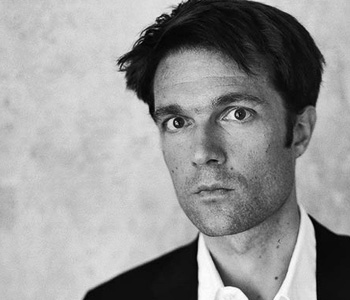Richard Bronk
The Romantic Economist: Imagination in Economics
Cambridge University Press
400 pages, 9 x 6 inches
ISBN 978 0521735155
ISBN 978 0521513845
My starting point for The Romantic Economist was an observation made during seventeen years working in the world of finance. I was struck by an important mismatch between the way economists usually model economies and the way markets often work in practice. Economists normally rely on essentially static equilibrium models to make predictions about markets, and they assume that economic actors optimise their trading possibilities on the basis of rational expectations. Yet, as we are daily reminded, markets are dynamic and creative processes characterized by relentless innovation, self-reinforcing emotional spasms and massive uncertainty. And, in this uncertain world, individuals are driven as much by emotion, sentiment, intuition and imagination as by rational calculation and probability forecasts of future utility.
The solution proposed in the book is that economics should complement its standard models and assumptions (which work well enough in many areas) with new ones derived from the poetry and philosophy of the Romantics which can make better sense of the creative and emotional aspects of markets.
Indeed, Romanticism is a surprisingly fruitful source of new assumptions, models and metaphors for helping us understand the role of imagination, moral sentiments and brute emotions in economic behaviour. The Romantics analysed the imaginative and emotional aspects of human nature in unsurpassed depth and, by building on their insights, economists can enrich the microfoundations of their discipline. The Romantics also championed the use of organic metaphors of growth and interdependence (borrowed from biology) rather than the mechanical metaphors of Newtonian physics. An updated version of their organic metaphors can go a long way in helping economists model complex social interaction and dynamic feedback effects.
At a more general level, The Romantic Economist argues that both sides of the divide between literature and science have much to gain from intellectual engagement with each other. To this end, the book aims to make the foundations of economic theory accessible to humanities-based readers and Romantic thought approachable for apostles of the dismal science. This is an interdisciplinary book for a complex age.

By experimenting with organic metaphors from Romanticism or non-linear models from Complexity Theory, economists have a better chance of making sense of the dynamic, self-reinforcing and creative aspects of markets.
The Romantics understood what scientists often forget: that, as Wordsworth put it, we ‘half-create’ the world we see. Any particular observation is the joint product of sense data our minds receive and the conceptual structure our minds contribute in making sense of that data. This has important consequences for the nature of science: there is no definitive and objective way of looking at the world, and we never have unmediated access to evidence and data. Rather we can only make sense of the chaos around us by supplying a metaphorical and theoretical framework, a principle of selection.
Scientists (including economists) must operate with the help of models and metaphors. As Coleridge said when arguing with a young scientist who thought he could analyse facts without first having a theory: ‘You must have a lantern in your hand to give light, otherwise all the materials in the world are useless, for you cannot find them, and if you could, you could not arrange them’.
But the trouble with lanterns – and with theories and metaphors – is that the light they cast is limited and partial. This means that if you only use one light – one theoretical framework – you will keep stumbling on aspects of reality outside the area illuminated by your chosen set of models. This has been the recent fate of much of the economics and policy-making fraternity. Convinced that the models of neo-classical economics and the Greenspan approach to market regulation and monetary policy were together a sufficient framework of understanding (and template for action), too many economists and central bankers have not been predisposed to see problems that were emerging: their theoretical and conceptual framework had no place for them.
There is never only one right way of looking at the world. Theoretical dogmatism renders us like a horse wearing blinkers, good at focusing straight ahead on one thing but liable to miss what is coming from left field. For this reason, it is crucial that we learn how to experiment with different metaphors, models and theoretical frameworks – different ways of seeing.
Changing the metaphors we use helps us make sense of different aspects of reality. So, for example, by experimenting with organic metaphors from Romanticism or non-linear models from Complexity Theory, economists have a better chance of making sense of the dynamic, self-reinforcing and creative aspects of markets. It is also important to deconstruct the hidden metaphors in so much of our discourse and analysis – in particular, the unconscious structuring impact of the mechanical and equilibrium metaphors that currently litter economics and constrain the way economists see the world.
Chapter eight, ‘Imagination and creativity in markets’, begins by analysing the nature of imagination and its relationship to reason. Imagination receives strangely little attention in most of modern academia in spite of its central role in perception, emotional colouring, the visualisation of what is absent, the anticipation of possible futures, sympathetic identification, mental receptiveness, lateral thinking and the unconscious and conscious building of new ideas ‘from least suggestions’ (to use Wordsworth’s phrase). Imagination remains the ghost at the banquet of philosophy, psychology and neurophysiology, and it is almost totally ignored by economists. By using the general insights of the Romantics about imagination, this chapter shows how markets operate as creative and dynamic processes and elucidates the type of micro-level assumptions required if economists are to make sense of the behaviour of individuals operating in the conditions of uncertainty necessarily engendered by this creativity.
The most topical aspect of the book may be its focus on the extent to which imagination and creativity both cause uncertainty and are also our best tools for coping with that uncertainty. The 2007-9 financial crisis occurred partly because of an intellectual failure to understand the extent to which uncertainty is an inevitable by-product of innovation and the human capacity to imagine new options. New options or novel ideas inject some entirely new elements into the equations of life. There is often no way that you can define all the possible outcomes in advance of innovation or the creation of new products; and innovation implies an important break in previously stable regularities of behaviour.
Why this is so important now is that the assumption implicit in many models used by banks before the credit crunch was that uncertainty about the future could be turned into measurable risk on the basis of data (including correlations) trawled from data on the past. And yet this notion that regularities in past behaviour were a safe predictor of future risks was being made at the very moment when the banking industry was innovating furiously. This innovation in financial products made it very unlikely that the future would resemble the past.
The Romantic Economist was written largely before the credit crunch and does not discuss it directly. Instead, it outlines in general terms how economic actors actually form expectations, make choices and create strategies in conditions where they are unable to rely on probabilistic forecasts and rational expectations. It shows how, in our uncertain age, we must learn to use (and understand the importance of) imaginative and intuitive responses as well as the narrowly rational.

Imagination and creativity both cause uncertainty and are also our best tools for coping with that uncertainty.
The current credit crunch is as much a crisis for economics as for economies. To the extent that economics was ever justified in seeing itself as another predictive science, the failure of most economists to predict what has happened is shocking and demands answers. In the area of macroeconomics, however, it was perhaps the very belief that the future – yet to be created by the choices of imaginative and emotional citizens – could ever be predicted that was the biggest error.
In this seemingly arcane area of debate about economic methodology, what answers economists and philosophers come up with matters to us all. For, the dominant models, metaphors and philosophical assumptions that economists use have an enormous influence (for good or ill) on government policy and economic behaviour and hence on the structure of social realty itself. As John Stuart Mill pointed out, ‘speculative philosophy, which … appears a thing so remote from the business of life and the outward interests of men, is in reality the thing on earth which most influences them’.
For this reason, all good citizens of intellectual persuasion should be interested in the philosophical basis of economic thinking. And economists ought willingly to submit their trade to audit by informed commentary from outside their discipline. They can facilitate this process by translating their findings and assumptions into what Wordsworth called the ‘language really used by men’, instead of routinely hiding behind impenetrable thickets of mathematical notation and jargon.
As the market swallows up more and more of our lives, and as economists influence more of the actions of government, the very structure of economic thinking – the shape of the economists’ lens – is central to humanity’s self-conception and to the future direction of our societies. That is why I hope ‘The Romantic Economist’ has an important role to play.




We don't put paywalls. We don't distract you with ads. We don't sell your data.
Please help to keep this running!